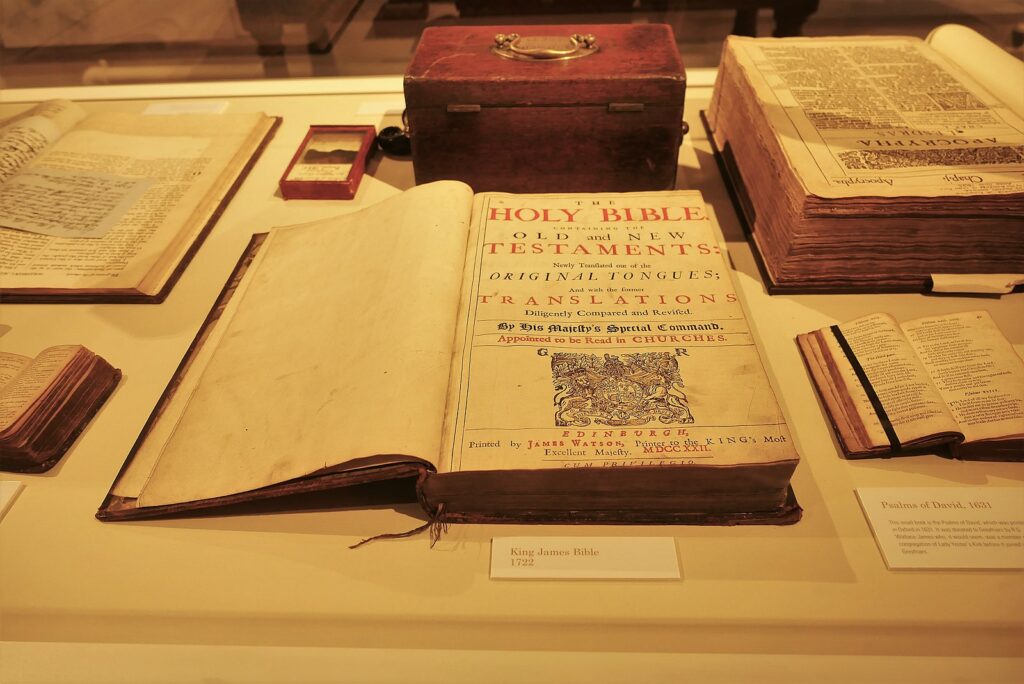Do you know what version of the Bible you have at home? Because there are loads of them!
The Bible is the best-selling book of all time, with at least five billion copies sold since 1500. Even the Guinness Book of World Records cannot ascertain how many Bibles have been sold since it was standardized in 1500.
The first Bible texts were said to be written between the years 386 and 388. Since then, the texts have only grown—the standard Christian Bible now has at least 66 books. The book was originally written in Hebrew and has been translated into many languages since.
For centuries, even English translations have varied: after all, you can say one thing in many different ways. And today, the Bible is said to have over 3,030 versions written in 2,000 languages.
These are some of the most well-known versions of the Bible:
- English Standard Version
- King James Version
- New American Standard Bible
- New English Bible
- New International Version
- New King James Version
- New Revised Standard Version
- The Revised English Bible
- Tyndale
- Revised Version
In the U.S., the King James Version is the most-favored iteration, with 31% of readers preferring it. Only 13% prefer the New International Version, 9% the English Standard Version, and 7% apiece for New King James Version and Amplified.
Why is the King James Version so widely read and preferred by many? Let’s find out.

Who Is King James, And Why Did He Commission a Bible Version?
James Charles Stuart was born in 1566 and was the only child of Mary, Queen of Scots. He was the great-great-grandson of Henry VII, then the King of England and the Lord of Ireland. When James was born, he was set to be the heir to three thrones simultaneously.
When James was born, his mother was forced to abdicate the Scottish throne—he was only a year old. He was declared King James VI of Scotland, and our different regents ruled on his behalf. In 1603, James succeeded his cousin Elizabeth I as ruler of England and Ireland, where he assumed the title of King James I.
King James’s reign in all three countries was at the peak of the troubles of the Roman Catholic and Protestant Church. King James was a protestant but was not heavy-handed on the Catholics as long as they recognized that the king trumped the pope in terms of power.
The Making of a Popular Bible Version
In the 17th century, the most popular version of the Bible in Europe was the Geneva Bible. However, it had annotations that were not acceptable to Puritans and Calvinists, the leading protestant sects in England.
James commissioned a new Bible to appease the largest denominations in England and to eliminate those annotations. Some of the unpopular elements included implications that the king was lower in rank than Catholic leaders.
Commissioned sometime in 1604, the King James Version was completed in 1611.
It wasn’t immediately popular—it took some time before it became widely read. In fact, King James never saw his version become as famous as it is today. He died on March 27, 1625.

What Made the King James Version Popular?
The popularity of the King James Version (KJV) cannot be attributed to the person who commissioned its creation.
First, King James wasn’t that popular in the first place. And second, it was the content that made the difference—it is said to have a remarkable cadence that resonated with millions of readers.
Here are the reasons why the version is so popular:
1. The Voice of God on Paper
Many said that the King James Version simply read differently. It is poetic, with a unique tone. According to the History website: “With its poetic cadences and vivid imagery, the KJV sounded to many like the voice of God himself.”
Carol Meyers, a professor of religious studies at Duke University, described the wordings of the King James Version as “majestic.”
2. Popular Phrases
Some of the most popular phrases and figures of speech uttered today came from the Bible and the King James Version at that. It shows how masterful the translators were when they redid the Geneva Bible.
What are some of these phrases?
- “The blind leading the blind”
- “My brother’s keeper”
- “By the skin of your teeth”
- “A wolf in sheep’s clothing”
- “Go the extra mile”
3. Accessibility
The printing press was invented in 1436. So, by the time the King James Bible was completed, prints were widely available. And because the king commissioned this project, there were more than enough resources to support the printing of many copies for distribution.
The version was readily available in England and surrounding countries and continued to proliferate as it became more popular.
4. Version Brought to Asia and Africa
Europeans had been circling the globe for centuries. It began as a venture for spice that eventually became trade missions. They also saw it as an opportunity to spread Christianity worldwide.
As explorers traveled the globe, missionaries joined and brought the Bible with them. The King James Version ended up in various countries in Asia and Africa. It became a major resource for how populations there learned how to read and write in English.
5. Unifying Bible Version
King James commissioned his version of the Bible to appease various Protestant sects. While not everybody was happy with it, the majority of Protestants ended up using it, particularly the Methodists, Presbyterians, and Purists.
Does It Matter What Bible Version You Read?
People can say “I’m hungry” in many ways: “I’m famished.” “I can eat a horse.” “I’m starving.” It’s the same for the Bible. The texts were originally in Hebrew and translated into thousands of languages. Naturally, phrases and cadences will differ depending on who does the translation.
There may be many different versions of the Bible, but the core meanings of the messages remain the same. If you want to hear God’s voice from the text you are reading, the King James Version is the best version for you.

